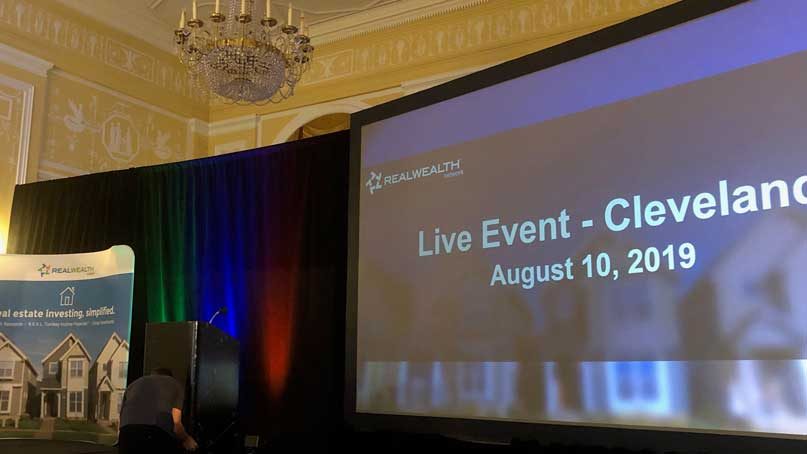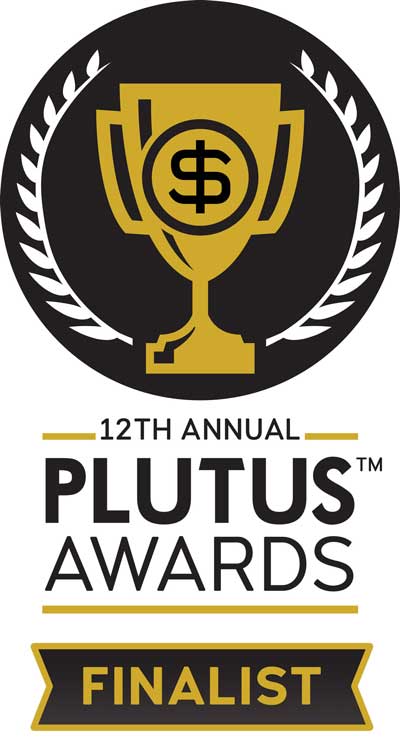I think it’s one of the work hazards of being a coach, but I spend an inordinate amount of money on learning & development, self-help and other personal and professional improvement resources. We spent just over $6,000 this year, and since 95% of that was directly attributed to me, I feel wholly responsible for the training line item.
This is actually a pretty mild year in comparison. A few years ago, we joined a real estate mastermind group that cost $8,000 just by itself – and we spent on other courses, conferences and groups that year. A few years before that I had been part of other mastermind groups, ranging from $12,000 to $40,000 (yes, like graduate school tuition without the frameable degree).
There is a wide range in cost from several dollars to several thousand
| Training Resource | Cost |
| marketing business group | $2,200.00 |
| women’s small business group | $1,997.00 |
| investment training by Dan Amerman | $516.95 |
| Tactical Asset Allocation subscription service | $399.00 |
| Printables course and monthly support | $255.00 |
| Babbel multiple language training | $199.00 |
| digital marketing e-course | $194.00 |
| wellness conference | $99.00 |
| fitness e-course | $49.75 |
| LinkedIn e-course | $47.00 |
| web design e-course | $39.00 |
| Pimsleur Tagalog language training | $29.90 |
| Fortune magazine | $24.50 |
| Broadway Investing 101 by Ken Davenport | $5.99 |
| Dig Your Well by Harvey Mackay | $5.22 |
| Wired magazine | $5.00 |
| day trading e-course | $3.00 |
| Battle For Investment Survival by Gerald Loeb | $1.18 |
Books
The cheapest form of training I got this year was in the form of books. I read a lot (43 books in 2019, though pacing for less in 2020).
Most of my books are review books that I receive for free from authors and publishers who hope I cover their book in one of my posts. Some books are borrowed from the library so still free. But every so often I am referred to a book that isn’t available at the library or that I need to mark up so I need my own copy.
However, even these purchases barely register as a percentage of my overall training budget – I spent $12.39 on books, or .2% of total training resources. Books will remain a primary resource for learning & development in the years to come.
Business Groups
On the upper end, I joined two business groups in 2020 – a 10-month group for $2,200, and a 12-month group for just under $2,000.
The second group will take me through most of 2021, so arguably it should be considered a 2021 training expense. However, my accounting is cash-in/ cash-out, meaning I recognize income and expenses when they post. So even though the training will take place mostly in 2021, I paid up in 2020, and it becomes a 2020 expense.
These two business groups take up 69% of the overall training budget.
Digital
In-between the extremes of books and business groups, there were various online courses and digital conferences that ranged from $39 to over $500. We also have some subscriptions – Fortune and WIRED magazine, a language learning app, some business support services that we could renew for next year.
We spent just under $1,900 for 17 different tools.
There are many ways to learn, and different formats have their pros and cons

Business Groups
My business groups meet virtually twice a month, and there is online chat in-between, as well as various resources shared (online courses, exercises, resource recommendations).
With these groups, I’m paying not just for the learning, but also for the community. While I haven’t collaborated closely with anyone in either of my 2020 groups yet, I have been in previous business groups where I gain a new friend or get referral business or some other benefit in addition to learning something new. The multifaceted benefit of a business group is its biggest advantage.
The drawbacks are the financial cost and the time involved – in order to take maximum advantage of the group, you need to invest time outside of the meetings to correspond with members, review the materials, and act on what you are learning. The time investment is as significant as the money.
Standalone courses
The standalone courses I purchased are work-at-you- own-pace and typically have lifetime access or at least a year’s access or long enough to easily digest the material.
We spent over $500 on two investment courses from Dan Amerman, whose blog I had been following for a while, so I knew he had well-researched, well-written material. I jumped in when I saw a 2:1 offer for his education DVDs on Gold Out Of The Box and Real Estate As An Asset-Liability Management Strategy.
Scott and I went through the material together (like a Netflix binge section but where you needed to concentrate), and we both thought it was money and time well spent.
Subscription Services
Subscription services are another type of resource. After taking a 33% loss on our stock portfolio, I felt like we needed more risk management than our buy-and-hold strategy offered, so we switched to tactical asset allocation via Allocate Smartly, which is an annual subscription service that summarizes the various TAA strategies available and provides the exact percentage allocations to use for your own portfolio to mirror whatever strategy (or multiple strategies) you choose to follow.
Getting the Allocate Smartly percentage allocations requires a renewal each year. In subsequent years, this renewal will be a financial expense, since it’s for maintaining our portfolio. However, for this year, while we were still learning about TAA and didn’t know whether or not we were committing to it (we are), I booked it as a training expense.
The ROI is almost 2:1 so far – I have earned almost twice as much in incremental revenue than the training has cost
Since we spent over $6,000 on training, an ROI calculation would measure the business revenue or investment gains or some other tangible benefit to the training. My 2:1 ROI calculation looks at a new group program that I launched, whose structure came to me while I was in one of my monthly business meetings. That group program earned over $12,000 this year, and it’s something I plan to expand in future years. If I just look at what I spent on that business group, the ROI would be almost 4:1.
We didn’t make any specific investments in gold or real estate, so one could argue that the financial ROI on our Dan Amerman investment is zero. However, I do think it changed how we will look at financing future real estate deals and refinancing our existing properties, so a tangible return may still come. The TAA subscription is paying off in terms of lower volatility for our portfolio, though we miss out on any big market increases. In that way, our ROI there is peace of mind for now.
Some of the training had negative ROI. I have spent $230 so far on language training and can’t speak another language yet. However, $199 of that expense was for lifetime access to all language courses that Babbel offers so I figure that the ROI will eventually be positive (the link is not an affiliate link, but a link to the NY Post article where I saw the deal). In the meantime, I look at language training as exercise for my brain (something Dr. Sanjay Gupta confirmed in his new book on Brain Health).
We also invested over $250 in a course on how to make printables, plus two months in a printables business group. So far, we haven’t made our money back in printables income. However, our store is up so that ROI may eventually turn positive. In the meantime, I finally tried a product offering unrelated to my core business, which I had been looking to do for a while. I didn’t enjoy it as much as I thought I would, so that $250 to try it firsthand and come to that conclusion is money well invested just for that.
Hopefully next year’s training budget will include live events

One of my business groups continues through October 2021, so I won’t need to spend several thousand dollars on any memberships. That said, I hope that travel opens up next year, and if so, I anticipate there will be conferences and other live events that I can attend.
Otherwise, I have the Babbel lifetime access to continue with my language training. I also have some downloads from this year (and even previous years) that I still need to review. My training budget should be smaller next year, especially if travel is still restricted. At the same time, I anticipate adding more in business revenue, investment returns and the non-financial but still important enjoyment factor from the learning and development resources I already own. The ROI will just keep ticking higher! How about you?
How have you invested in yourself this year?


 We are Scott and Caroline, 50-somethings who spent the first 20+ years of our adult lives in New York City, working traditional careers and raising 2 kids. We left full-time work in our mid-40’s for location-independent, part-time consulting projects and real estate investing, in order to create a more flexible and travel-centric lifestyle.
We are Scott and Caroline, 50-somethings who spent the first 20+ years of our adult lives in New York City, working traditional careers and raising 2 kids. We left full-time work in our mid-40’s for location-independent, part-time consulting projects and real estate investing, in order to create a more flexible and travel-centric lifestyle.  Financial independence and early retirement is not something we originally focused on, but over time realized it was possible. Our free report,
Financial independence and early retirement is not something we originally focused on, but over time realized it was possible. Our free report, 








Investing in training is reality for almost every profession or hobby. Some of it is just to know but some of it for getting a return or maintaining a license or registration.
i buy motley fool stock advisor service every year. the rec’s have made us 100’s of thousands the past 5 years for about 150/year. i know stocks aren’t really your thing, though. i would gladly help you with paper asset allocation if you only have some simple etf’s. it’s pretty easy.
We use Allocate Smartly, which is slightly more but not much more, and the focus is risk management. We are happy with what we have but thanks for the additional option. I’m sure our readers will benefit from more choices!